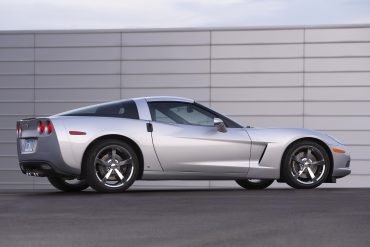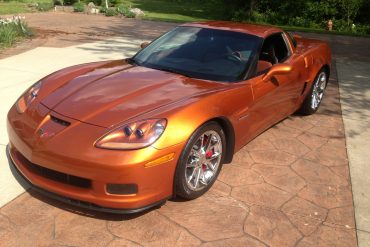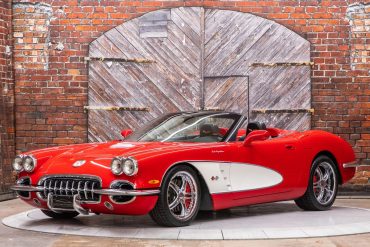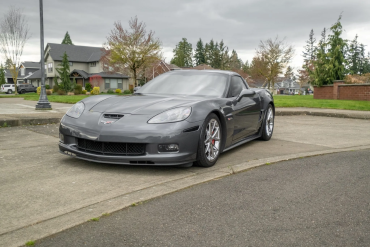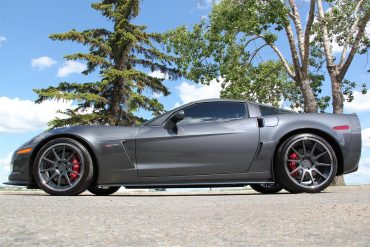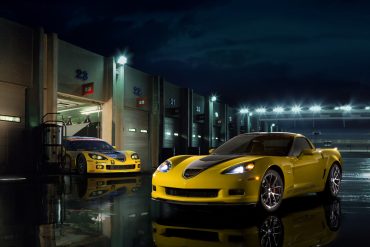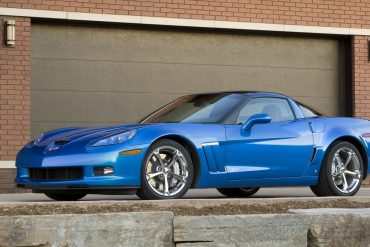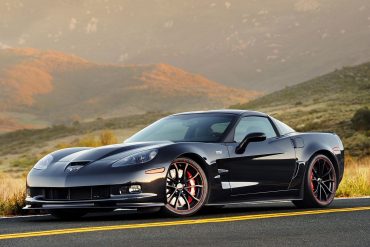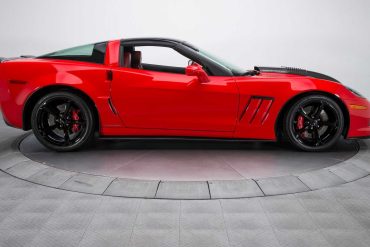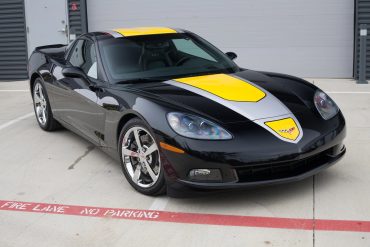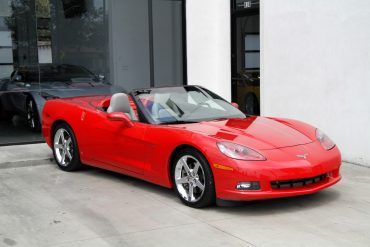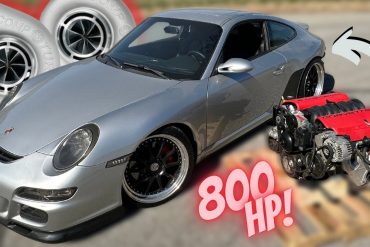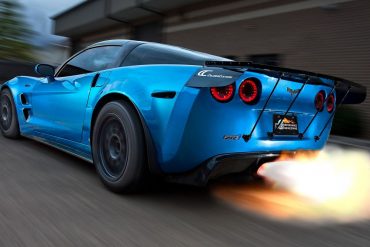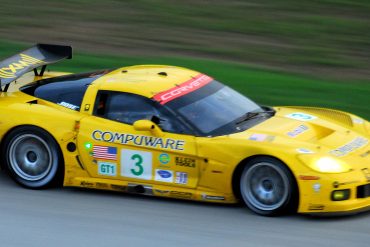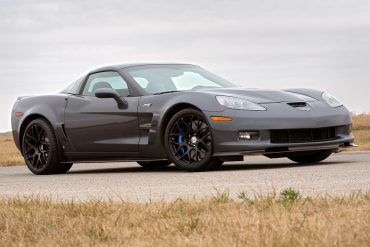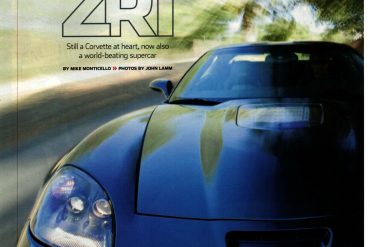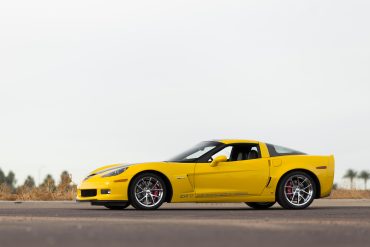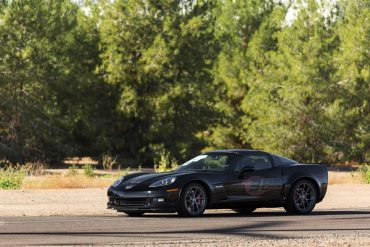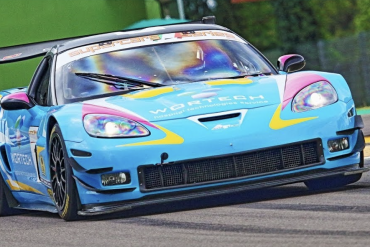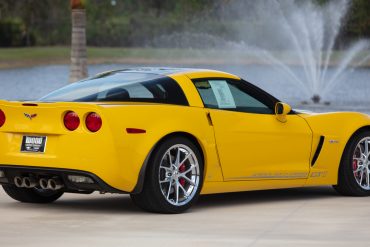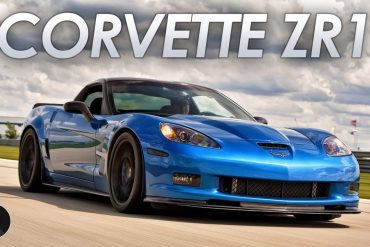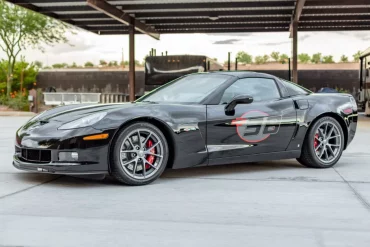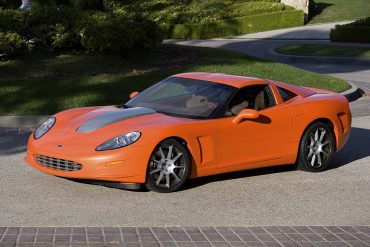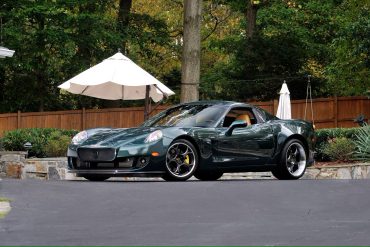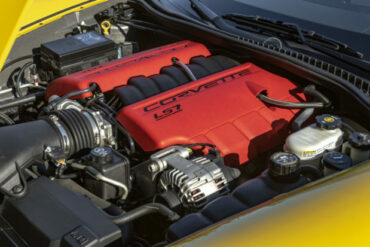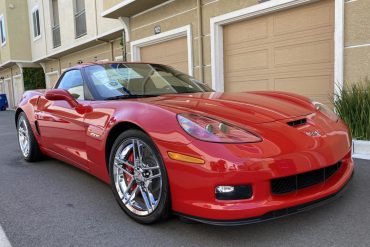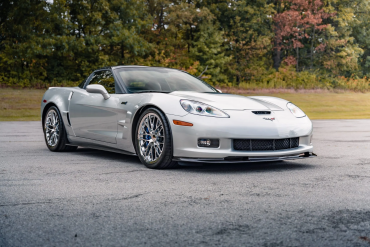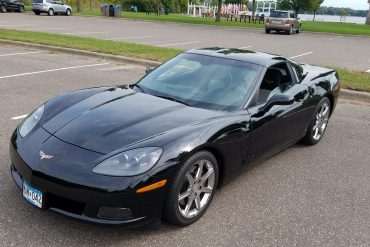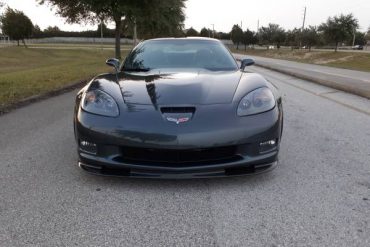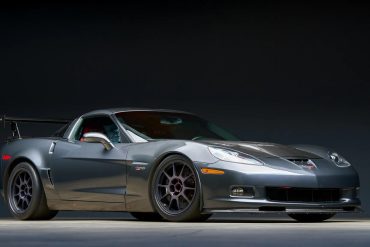Blade Silver 2009 Chevrolet Corvette We found some examples of 2009 Corvette in the Blade Silver color scheme. These real Blade Silver paint...
Atomic Orange 2009 Chevrolet Corvette We found some examples of 2009 Corvette in the Atomic Orange color scheme. These real Atomic Orange paint pictures...
This 2009 Corvette CRC conversion, offered for sale on Bring A Trailer, seamlessly blends classic 1958 Corvette aesthetics with modern...
While the changes to the coupe and convertible were indeed subtle, the Z06 received a little more flare for the...
Cyber Gray 2009 Chevrolet Corvette We found some examples of 2009 Corvette in the Cyber Gray color scheme. These real Cyber Gray paint pictures...
Chevrolet introduced the limited production Corvette GT1 Championship Edition at Sebring International Raceway. The GT1 Championship Edition (Regular Production Option GT1) commemorates the success of Corvette Racing and the Corvette C6R.
2009 Corvette – The Ultimate Guide The arrival of the 2009 Corvette came at a time when General Motors, and...
The C6 is truly a track-capable beast that offers incredible power at an affordable price. When developing the sixth-generation Corvette, Chevrolet adopted the mantra, "If it ain't broke, don't fix it." For all intents and purposes, it was an evolution of the C5.
The 2005-2013 Callaway Corvette was a specialist version of the C6 Corvette, built by Callaway Cars expert craftsmen and sold through selected Callaway/Chevrolet dealers. The 17th “C-Project” undertaken by Callaway first produced naturally-aspirated SuperNatural™ 450, 461, 490 (6.0L) and 550 (6.8L & 7.0L) horsepower Callaway Corvettes. In February 2006, Callaway returned to its positive manifold pressure roots, introducing Callaway “SuperCharged” Corvettes.
To commemorate the successes of the C6.R Corvette Race Car, GM also introduced a limited production GT1 Championship Edition Corvette...
Crystal Red 2009 Chevrolet Corvette We found some examples of 2009 Corvette in the Crystal Red color scheme. These real Crystal Red paint pictures...
The Chevrolet Corvette LS3 is renowned for being one of the most beloved engines in automotive history. It has been...
2009 Corvette Wallpaper Collection We have curated the ultimate collection of the best 2009 Corvette Wallpapers and HD backgrounds for...
The Corvette C6-R race car debuted at the 12 Hours of Sebring in March 2005. The two-car, factory-backed Chevrolet sports car program competed in the production-based GT1 class (formerly GTS) of American Le Mans Series as well as the legendary 24 Hours of Le Mans in France. It was the most technically advanced sports car ever developed by GM, culling years of experience from the Corvette C5-R as well as the advancements brought forth from the next-gen Corvette C6 and Z06.
See the complete technical specifications and performance information for the 2009 Chevrolet Corvette, including engine specs, acceleration, & quarter mile.
2009 Corvette Ads We have curated a cool list of all the 2009 Corvette advertisements, commercials and posters we could...
In 2009, Chevrolet proudly commemorated its remarkable achievements in GT1 racing with the GT1 Championship Special Edition Corvette. And there...
In 2009, Chevrolet introduced the Competition Sport package (RPO CSC) designed for passionate track-driving enthusiasts seeking an unparalleled driving experience....
During the summer of 2005, a decision was made to transform selected Z06 road cars into a new breed of racer to compete in the world's top GT3 championships. The first series to introduce this new GT3 class was the SRO and FIA's GT3 Championship. Based on their racetrack test results, Team Carsport saw instant potential in the car. Hezemans contracted Callaway Competition in conjunction with Koos Pettinga, manager at Corvette Europe, to convert the street Z06 into a Z06R GT3.
Velocity Yellow 2009 Chevrolet Corvette We found some examples of 2009 Corvette in the Velocity Yellow color scheme. These real Velocity Yellow paint pictures...
The savagegeese YouTube channel managed to get their hands on a well-modified 2009 Chevy Corvette ZR1 that that makes over 850WHP....
There were only 20 Z06s produced with the Competition Sport package for worldwide purchase. This Z06 is powered by a 7.0-liter LS7 V8 engine producing 505hp and 424 ft/lbs torque, paired to the 6-speed manual transmission. The LS7 engine can propel this Z06 from 0-60 mph in 3.6 seconds. This Z06 CSR features leather interior, articulated sport seats, premium audio system, CD player and heads-up display.
The Callaway C16 was Callaway’s 16th major automotive project. It was a limited production, bespoke automobile, built to order, by what the Press called “the best specialist engineers in the business”. These cars are seriously fast, beautiful, and exclusive. The C16 was a direct competitor for the Porsche GT3, the Lamborghini Murcielago, the Ferrari 599 GTB. It was both faster and more capable than its competitors, at less cost.
The SV9 Competizione debuted in 2009 at the SEMA show held in Las Vegas, drawing inspiration from the Alfa Romeo...
In the midst of the Z06’s development, engineers knew that something truly remarkable would be needed to best the base Corvette’s 400 horsepower LS2. In its production form, this new small-block V8 came to be known as the LS7. The LS7 was nothing short of all-powerful, featuring a displacement of 427 cubic inches and an output of 505 horsepower.
Victory Red 2009 Chevrolet Corvette We found some examples of 2009 Corvette in the Victory Red color scheme. These real Victory Red paint pictures...
The base price of the 2009 Chevy Corvette Coupe without any optional equipment. Included a 430 Horsepower, LS3 engine, a six-speed manual transmission, stereo CD with XM radio and an auxillary MP3 jack, OnStar, leather seats, power driver seat...
Black 2009 Chevrolet Corvette We found some examples of 2009 Corvette in the Black color scheme. These real Black paint pictures of real 2009 Chevy...
As has become a bit par for the course, we here at Corvsport love to hear about local cars up...
This 2009 Chevrolet Corvette Z06 has been extensively modified for track use. It features a 7.0-liter LS7 V8 crate engine...


